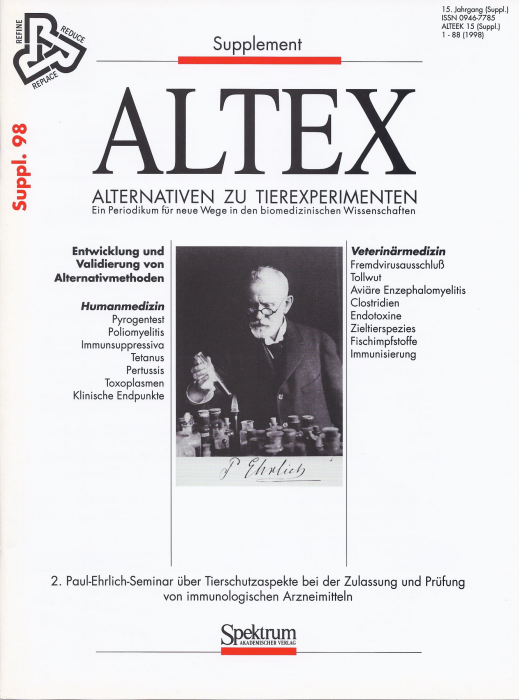[Development of a pyrogen test based on rabbit blood] [Article in German]
Main Article Content
Abstract
The testing of drugs for pyrogen contamination e.g. the exclusion of fever inducing impurities, was standardised in the Forties in the form of animal pyrogen assay. We recently proposed an alternative method using human whole blood from healthy donors. The substances to be tested are incubated in the presence of blood and the generation of endogenous pyrogens (Interleukin 1, IL-1) are measured reflecting the primary fever reaction in man. With this method it is possible to detect the reaction of the relevant species. However, pronounced differences were reported for the potency of several bacterial pyrogens in different species (e.g. up to factor 10.000 for an individual endotoxin in different mammals). As a part of the validation of the new method discrepancies between the whole blood system and the rabbit test might occur. In these cases it is not possible to distinguish between an in-vitro-artefact and species differences.
Therefore, the goal of this project is the development of an in-vitro-test based on rabbit blood. For this purpose rabbit IL-1 was expressed. At present chickens and mice are immunized and possibly crossreacting anti-human-IL-1-antibodies are tested. In this way, an ELISA for the rabbit cytokin will be established. Using a temporarily commercially available rabbit TNF-ELISA, the feasibility of the test-system could already be shown: Pyrogens induced the generation of TNF in rabbit blood. In the human model, the endpoints IL-1 and TNF were very similar. The sensitivity of human blood and rabbit blood appeared to be very similar. However, individual pyrogens (only different endotoxins were tested up to now) showed considerable deviations. However, these results require the verification in the final test.
The rabbit test in preparation will be implemented immediately into the ongoing evaluations by the Paul-Ehrlich-Institute (BMBF) and at the University of Heidelberg (European Pharmakopoea). Furthermore, such a test also represents an interesting alternative in the veterinarian medical field using the correct target species for pyrogenicity testing.
This project war supported by the Foundation Research 3R, CH-Muensingen.
Article Details

This work is licensed under a Creative Commons Attribution 4.0 International License.
Articles are distributed under the terms of the Creative Commons Attribution 4.0 International license (http://creativecommons.org/licenses/by/4.0/), which permits unrestricted use, distribution and reproduction in any medium, provided the original work is appropriately cited (CC-BY). Copyright on any article in ALTEX is retained by the author(s).


